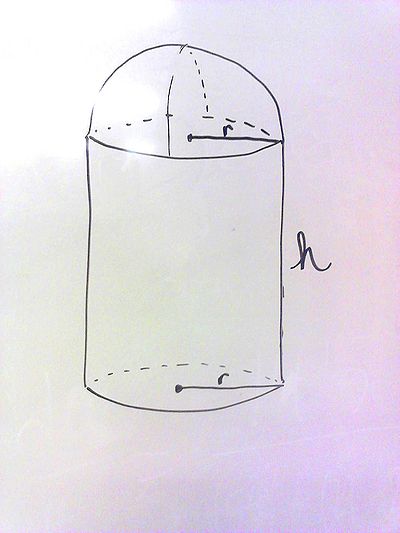Let's start with a picture.

Let P be the price of the wall material per square area. Thus, the price of the roof is 2P per square area. Let V be the given volume. The formula for the volume of this house is

where the first term is the volume of a cylinder and the second term is half the volume of a sphere. We will need to isolate for h later so doing so now while the formula is fresh, we have

We're minimizing the cost of the house. The cost of this house is equal to the surface area of the wall multiplied by the price added to the surface area of the roof multiplied by 2P. As part of our simplification process, we'll plug in the formula for h immediately above, to arrive at a final equation that's only in terms of one variable, r.

Following our usual procedure for optimization, we take the derivative by the product rule. Recall that V and P are constants - our only variable is r.

This is where we'll replace V with our original volume formula above, and simplify.

Setting the derivative to zero and solving gives  . One more subtlety with this problem is that we should verify that this is indeed a minimum. Plugging back in terms of r in the first derivative gives
. One more subtlety with this problem is that we should verify that this is indeed a minimum. Plugging back in terms of r in the first derivative gives

Setting to zero and solving gives  (notice that r equal 0 is not admissible since our house needs a radius, so we don't need to worry about this critical point). Taking the second derivative yields
(notice that r equal 0 is not admissible since our house needs a radius, so we don't need to worry about this critical point). Taking the second derivative yields

and since r is positive in our critical value, we see that our second derivative is positive, hence our cost function is concave up and thus this ratio of r to h is a minimum as required.









